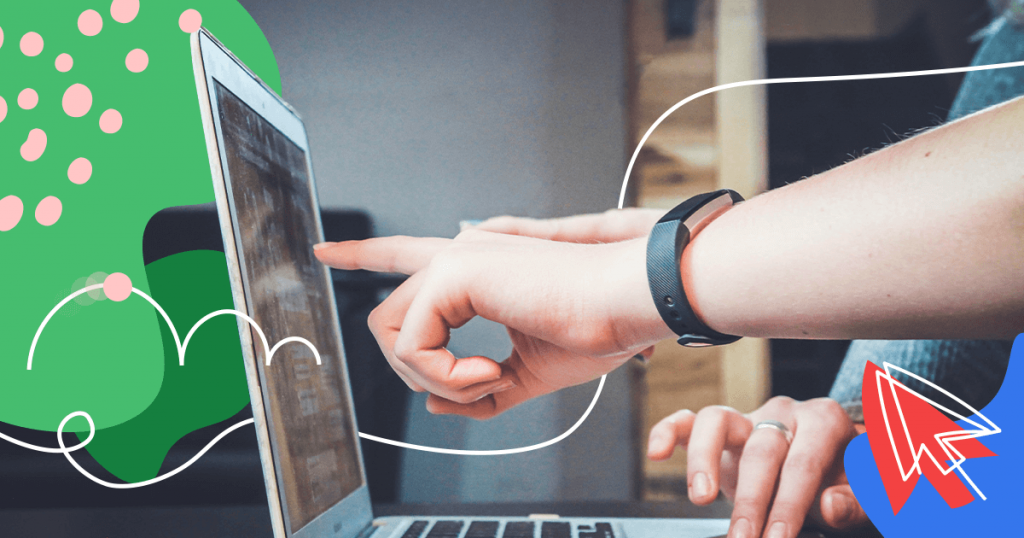Your website is how you present yourself, your company, to the world. But, how can you tell if it’s doing what you want it to and reaching the people who need it?
The quick answer is to check your bounce rate.
The higher the rate, the less you are capturing the attention of those who find your website.
If this is occurring, then it’s time to access the type of content you provide. With so much available on the web these days, the goal is to find a way to stand out.
How can you make the visitor experience more engaging, enticing them to stay, look around, and even convert?
Start by resisting the temptation to only stay with the traditional marketing approaches, which rely on passive consumption by website visitors.
It’s time to up your game by adding interactive content, the type of content that catches a visitor’s eye, leading to curiosity or excitement.
By creating more opportunities for engagement, you can significantly lower your bounce rate and increase conversion rates at the same time.
Keep reading to know more.
First of All, Exactly What is Bounce Rate?
Understanding what a bounce rate is gives you a metric for understanding your web pages’ performance.
Picture a ball bouncing once before disappearing down the hall, never to return.
Now picture a visitor to one of your web pages stopping by to check you out, then leaving without going anywhere else on your site. Essentially, they, too, disappear down the hall and out of sight.
This is a bounce. Add more of these bounces, and you can determine the bounce rate of each webpage on your website.
Bounce rate is a metric showing what percentage of your web page visitors leave without any further action, such as clicking onto another page, entering an email address to receive further information, or purchasing something.
This metric is different from looking at the overall traffic to your website.
Your traffic numbers can be high, but once viewers are there, what are they doing? That is the key to understanding how your website and content are being perceived.
Common reasons visitors bounce include:
- The site is not user-friendly.
- The webpage fails to meet expectations.
- Unattractive page design.
On another, not so negative note, a bounce may also indicate that the page provided exactly what the viewer was looking for, and they left satisfied.
Why Worry About Bounce Rate?
You’re obviously already doing something right if you’re successfully driving traffic to your website.
But these days, that’s simply not enough to keep them there and establish authority or increase conversion rates.
Your bounce rate affects your overall digital marketing strategy.
It can identify issues on your website, such as specific content or design that needs addressing.
If a visitor leaves shortly after encountering your page, this is a red flag, and you need to understand why it is happening.
Another important reason you need to worry about bounce rate is that the potential for conversions leaves along with your visitors.
It’s obvious that anyone who bounces doesn’t convert. Finding ways to stop the bounce is imperative in increasing overall conversion rates.
With visitors leaving before moving further along their buyer’s journey, your sales funnel is being constricted, and you’ll need to identify where this happens.
Finally, you need to worry about your Bounce Rate because it can negatively impact your Google ranking.
The longer a viewer remains on your page or website, the more chances of being recognized by search engine algorithms.
With a bounce, the viewer is signaling to Google that the page isn’t responding to their search engine query efficiently enough.
Always check on the bounce rate of your pages, and worry if they seem too high. There’s a lot riding on them.
Where Should Your Bounce Rate Be?
No two industries are exactly alike, so a so-called normal bounce rate will vary across industries.
It will also vary according to different types of traffic sources. For example, in most instances, social media traffic tends to result in some of the highest bounce rates.
The average range across the board today seems to be between 41% and 51%. But many websites experience much lower rates or higher, even up to 80%.
- High Bounce Rate: 56-70%
- Average: 41-55% (or Normal Bounce Rate)
- Low Bounce Rate: 20-40%
For a quick assessment, consider that at 20%, approximately 1 in 5 of your visitors are leaving without further interaction.
The lower bounce rate is where you want to be.
With it, your visitors are spending more time on your pages and continuing to click on other links you provide for more information or to purchase.
The Definition of Interactive Content
Viewers may read the content you have on your website, but will they remember it?
Will it get them thinking about their own unique situation more?
With so much content saturating the web these days, why take chances on not standing out and engaging visitors?
Adding quality interactive content gets readers involved, engaging them mentally and physically and providing a more memorable experience.
But what exactly is interactive content?
Simply put, it’s content that encourages visitor participation and needs to be a key component of your Content Marketing strategy.
Examples of the different types of interactive content include:
- Quizzes
- Polls
- Surveys or forms
- Embedded social media,
- Infographics, with interactive components and easy navigation
- Before and after results, with the slide of a bar (e.g., map)
- Game-like content with a focus on interactive learning
- Interactive lookbooks
- Embedded videos (yours or someone else’s)
Select interactive content types you can create and which will relate to your particular business, field, or industry.
You’ll also need to determine where to add the interactive content
Three ways to do this are:
- Identify and review pages that have the highest bounce rates.
- Monitor in-page analytics.
- Conduct A/B testing.
There are various ways to create interactive content, and it can be time-consuming if you’re not already familiar with how to go about it efficiently.
For this reason, looking for new online tools may be a better way to approach creating Interactive Content, making it easier and quicker to get going.
One, in particular, is Ion.
With its interactive content editor, you can design your own calculators, lookbooks, quizzes, and infographics. Or you can choose to work with a designer instead.
4 Reasons Why Interactive Content Can Influence a Good Bounce Rate
The marketing climate is constantly changing, and the competition continues to increase. Finding ways to engage your website visitors and keep them coming back is essential.
Interactive Content can help improve the user experience and lead to good bounce rates for your pages.
Reasons for this include:
1. Increases Dwell Time
Interactive content encourages visitors to stay longer once on your webpage, thus increasing dwell time and lowering bounce rates.
2. Increases Brand Engagement
This type of content increases interaction and engagement with your brand, bringing visitors back again and again.
3. Furthers the Sales Funnel
Interactive content entices visitors further along the sales funnel, improving bounce rates of other pages on your website.
4. Leads to More Effective Marketing
Not only will your visitors be more engaged with your content, but you can gather information about them which can lead to modifying buyer personas for more effective marketing.
First impressions are important. While something brought visitors to your webpage, figuring out how to keep them there is the secret to successful content. It can also better your bounce rates.
Best Types of Interactive Content to Reduce Bounce Rate
To achieve higher engagement and reduce bounce rate, create a captivating experience for your website visitors.
If you’re struggling with determining what type of engaging content to add, consider the following best types of interactive content to reduce bounce rates.
1. Interactive calculator
Interactive calculators can be used at different stages of the sales funnel.
For example, a calculator that shows a company’s Customer Acquisition Cost (CAC) is ideal at the top of the funnel.
However, you can develop a funnel bottom piece showing the benefits your leads will have in doing business with you.
This is possible if you show how much (financially) the lead will save if you close a deal with your company.
For example, Cengage, a digital education provider, has put together a calculator that shows how much students can save on college textbooks if they use Cengage Unlimited.
2. Interactive quiz
Interactive quizzes are an excellent way to educate your website visitors and buyer personas while you learn more about them.
The format, which resembles a game, is extremely attractive to users and guarantees a personalized experience.
Readers will find different results based on the alternatives they select.
For example, Dun & Bradstreet has created a quiz that determines how successful B2B marketers will be in accelerating sales.
At the end, the user receives personalized results and some tips on how to improve the process.
3. Interactive infographics
Infographics are a great format for conveying complex information.
By mixing text and images, infographics are able to capture the user’s attention and facilitate their understanding of the content transmitted.
Various surveys and studies find that users remember more information when it comes with images.
Interactive infographics, in addition to having visual appeal, can also contain parts that encourage reader engagement, such as quizzes.
Wrap Up: Ready to Add Interactive Content for a Good Bounce Rate?
If you’re not already including different types of interactive content on your web pages, you’re missing out on a valuable tool to guarantee a good bounce rate.
With that good bounce rate, you can improve organic search results, raise conversion rates, and increase your number of returning visitors.
Discover how you can use interactive content in your content strategy by downloading our guide today!
Start creating interactive content with Ion and increase your marketing results!
Start creating interactive content with Ion and increase your marketing results!










